-
Posts
2,962 -
Joined
-
Last visited
Content Type
Profiles
Forums
Blogs
Gallery
Events
Store
Posts posted by Chip
-
-
Andy,
Where was this Hill 1114 located? Ah, OK I found this report from the 12.Isonzo battle.
"Der linke Flügel der Gruppe Stein greift nach Überrennung der vordersten Talstellung südwestlich Tolmein zusammen mit der Gruppe Berrer die feindliche Hauptstellung auf dem Kolovrat-Rücken an. Stürmende Infanterie klettert von der 160 m hohen Talsohle im feindlichen Feuer die steilen Hänge bis über 1000 m empor. Die Gipfel des Kolovrat bilden in dem stark befestigten Stellungsknoten bei Höhe 1114 den Schlüsselpunkt dieses ganzen Systems. Bereits am Nachmittag kann der Sturm gegen Punkt 1114 und das benachbarte Massiv des Haefnik angesetzt werden. Weiter südlich bricht die Stellung des Jeza-Blockes im Angriff der Gruppe Berrer zusammen. Unablässig drückt der Südflügel der Armee (Gruppe Scotti) über den Hrad Vrh gegen die Kette des Globocak vor. Eiserne Meißel hat General v. Below angesetzt gegen die Felsblöcke der Julischen Alpen. Teutonenkräfte bohren und schlagen, Löcher werden zu klaffenden Lücken. Wie eine eherne Maschine arbeitet die Armee an den Granitwällen der Berge, frißt sich tief hinein durch Hindernis und Beton. Sie arbeitet genau nach Überlegung und Plan."
0 -
Super pass! Many units, fronts, actions. Really interesting historical timeline.
I found it particularly interesting that Gebirgs-Artillerie-Abteilung Nr.5 and Nr.6 shared the same Ersatz Abteilung. I think these units were a mixture of troops from Bavaria, Württemberg and Prussia.
0 -
Chris,
Did some South African units wear them too?
0 -
-
Chris,
Not the wrong ones at all. The Leibers had two gray uniforms prior to the war, One, the "Friedensgarniture" had the Litzen on collar and cuffs. The second, the "Kriegsgarniture" had no Litzen. This one appears to be a hybrid of the two, circa early 1915 to early 1916. It has the Kriegsgarniture cuffs with the simplified shoulder straps (no piping, no tongue) and the shortened collar Litzen. There were lots of uniform changes in throughout 1915 and early 1916, so I'm not surprised to see this mish-mash. As we have seen with the Bavarian (and I am sure with the other contingents) the shortages caused everything to be used. New items were added to uniforms when they came available. So, you would have an older stock tunic like this one getting the upgraded insignia when it was issued.
Chip
0 -
Andy,
#1- I'm pretty sure that is an Abzeichentuch collar (look at the smooth surface as compared to the body of the tunic.
#2 - I know the Bavarians used the crown buttons on the Bluse, but that button is not a M15 button, but is rather a white metal example as would have been worn on the previous model Waffenröcke. I'm attaching a picture of a comparison of the two. These are the smaller, shoulder strap, hip pocket size buttons. The M15 has a larger crown that covers the button side to side, is painted feldgrau and has no raised rim. The M07 button is the opposite, that is, with smaller crown, with rim and in this case, most likely in white metal (pioneers). It's not regulation, but it is what it is.
0 -
You got it. Bavarian Telegraph Battalion.
0 -
Chris,
It could be a three, but that doesn't make sense with this state cockade. If I saw the cockade by itself, I would say it was Baden, but that doesn't appear to be correct either. The cockade looks like an officer or Portepee NCO type, yet this fellow is not even a Gefreiter. If the strap truly only has the number "3", then the only other possibility I can think of is that he is Bavarian. But then, how to explain the crown shoulder button? Lots of questions with this one.
0 -
Robin,
That barrel cuff us unusually shallow. I think the insignia is low because it is nearly the same height as the cuff. In order to keep it on the cuff, it had to be in that position.
0 -
Hello bolewts58,
The Hubertus stag head is not a Jäger Kaiserabzeichen. They had the year of the award on the skull. They were also on a green backing wool (though this is easily changed). This one, I suggest, is a postwar version, worn variously by hunting associations, etc.
0 -
Chris,
I have never seen one of these before either! Very nice indeed.
Chip
0 -
Andy,
Any idea what Sturmabteilung 27 was? A divisional detachment for the 27th Division?
Chip
0 -
Andy,
Well, it was certainly a lucky find and absolutely the best bargain of the year.
Chip
0 -
Chris,
It looks like the captions to the photos are inked originals. Do you think each booklet was hand captioned at the time it was presented, or did this owner do it himself or was this just a one-off booklet, that is, only one produced?
Chip
0 -
Thanks Uwe,
I could not get "Schwindel". It appeared to be two words that I could not make sense out of. I looked up the word Schwin and found nothing.

Chip
0 -
Nice photo Chris. Germans love their instruments! Even the gas unit has a band.
0 -
-
The text is more interesting in that he is giving instructions for his "Extramütze" to be sent with a gray band for the field.
Chip
0 -
It must have been fate on several levels. First, when I look on-line I normally don't look at Militärpaß (I only have three now). Secondly, all those who normally do look didn't catch this. It sure pays to know some regimental history when it comes to famous historical figures. If the pass hadn't been to the 124th, I probably would have passed it by.
0 -
Just received this Militärpaß. It is seemingly a run-of-the-mill infantry example, but when you look a little closer, it becomes very interesting. Musketier Alois Frick, born 1895, entered the service in January of 1917, five months from his 22 birthday. He's in the Ersatz Batallion of K.W.Infanterie Rgt.Nr.124. In September of 1917 he is sent to the 6,Komp.I.R.124 in the field. He serves the rest of the war with this unit. One interesting entry mentions his being sent to a Sturmabteilung for a couple of weeks (advanced training?). An otherwise pretty bland pass, which when offered, did not even show the Sturmabteilung passage (it was under an added sheet of his battle record). The pass sold for below the normal price of a Militärpaß. Alois was mustered out of the service in December of 1918 and two months later his service was recorded in his book (20.02.19). It was signed then by a newly promoted captain (21.12.18), who had some history with the regiment. Recognize the signature? I guess I was the only one bidding who did.
0 -
Could the marking be "11.G.R."? "G.J." doesn't seem to make any sense (at least to me!).
0 -
Andy,
I think you mistyped the date for P.B.39. The war was over on December 1,1918!

Chip
0 -
Eric,
I'm just speculating here, but if you have one and a half of a man's tags, I would assume he survived the war. I say that because if one half of the M16 tag stayed with the body and one half was collected by the unit, then there shouldn't be any left. I normally assume that half tags in good, non-dug condition were just broken in half and separated. This old zinc gets really brittle and the perforations are a weak area.
Chip
0 -
Eric,
If you are only going to keep one set, I think you made a good choice. Very nice.
Chip
0




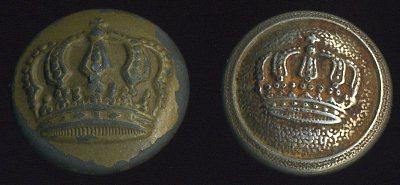
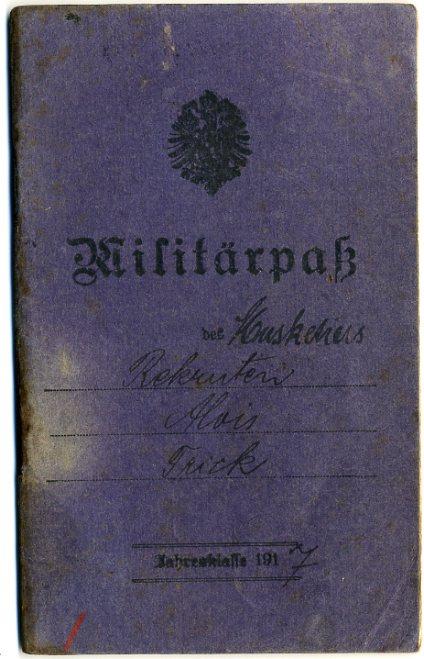
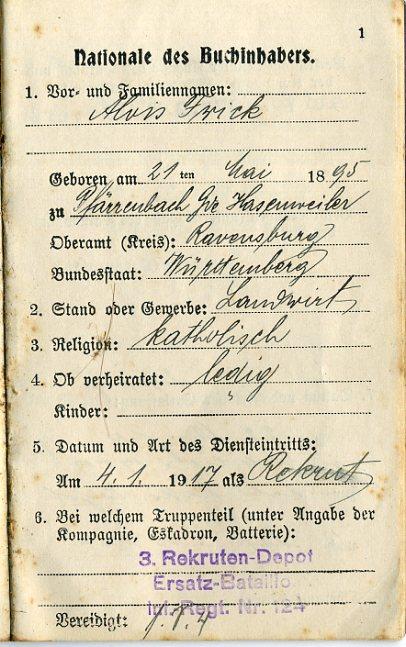
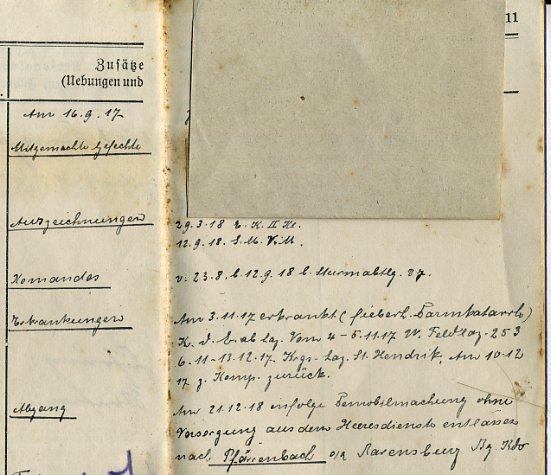
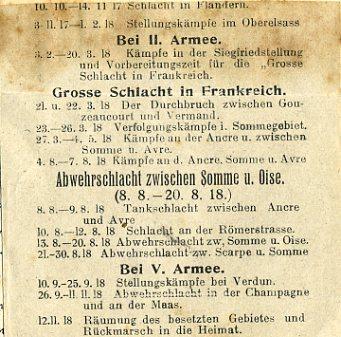
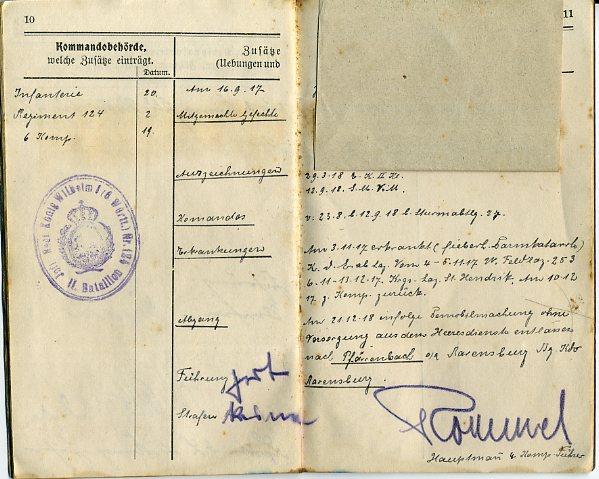
Australian Slouch Hat
in Commonwealth Realms: Canada, New Zealand & Australia Medals & Militaria
Posted
Thanks for the photos! I had thought that I had seen SA slouch hats. I just was not sure of the period. Thanks for clearing that up.
Chip